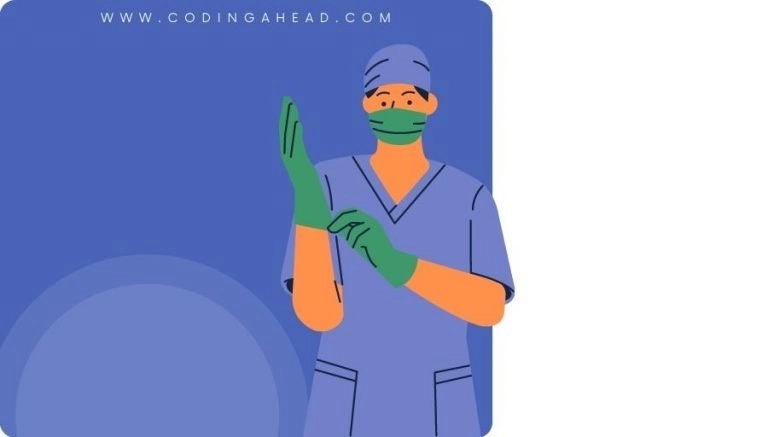How To Use CPT Code 61343
CPT 61343 describes a surgical procedure known as craniectomy, suboccipital with cervical laminectomy for decompression of the medulla and spinal cord. This article will cover the description, procedure, qualifying circumstances, appropriate usage, documentation requirements, billing guidelines, historical information and billing examples.
1. What is CPT Code 61343?
CPT 61343 is a code used to describe a surgical procedure that involves the removal of a small portion of the occipital bone at the back of the skull, along with the back of the upper one or two cervical vertebrae. This procedure is performed to relieve pressure on the medulla, or brain stem, and spinal cord. It may also involve the use of a dural graft, which is a piece of tissue used to expand the dura, the tough outermost layer that surrounds the brain and spinal cord. The goal of this procedure is to reduce or eliminate compression of the spinal cord.
2. Official Description
The official description of CPT code 61343 is: ‘Craniectomy, suboccipital with cervical laminectomy for decompression of medulla and spinal cord, with or without dural graft (eg, Arnold-Chiari malformation).’ This code specifically refers to the surgical procedure that involves the removal of a portion of the occipital bone and the upper cervical vertebrae to relieve pressure on the medulla and spinal cord.
3. Procedure
- The surgeon begins by making an incision at the back of the head and widely retracting the tissue to expose the surgical area.
- Next, the surgeon removes a small portion of the occipital bone, which is the single trapezoid-shaped bone at the back of the skull.
- The surgeon then performs a laminectomy, which involves removing a portion of the lamina, the posterior arch or back part of the first cervical vertebra, also known as the atlas.
- If necessary, the surgeon may also remove the upper part of the lamina of the second cervical vertebra, known as the axis, if the compression extends below the C2 level.
- If additional decompression is required, the surgeon may incise the dura, the tough outermost layer of the brain and spinal cord, to relieve pressure.
- In some cases, the surgeon may need to use a tissue graft, such as dura, muscle, fat, or fascia, harvested from the patient’s thigh or a cadaver, or a synthetic dural substitute, to expand the dura and create a watertight seal.
- Finally, the surgeon closes the incision, folds the tissue flap back, and applies a sterile dressing over the area.
4. Qualifying circumstances
CPT 61343 is typically performed for patients with a condition known as Arnold-Chiari malformation, where brain tissue extends into the spinal canal. The procedure is intended to relieve pressure on the medulla and spinal cord caused by this malformation. It is important to note that this procedure should only be performed by a qualified surgeon with expertise in neurosurgery.
5. When to use CPT code 61343
CPT code 61343 should be used when a craniectomy, suboccipital with cervical laminectomy, is performed to decompress the medulla and spinal cord. This code should be used specifically for cases involving the removal of a portion of the occipital bone and the upper cervical vertebrae. It is important to accurately document the procedure and ensure that it meets the criteria outlined in the official description.
6. Documentation requirements
To support a claim for CPT 61343, the surgeon must document the following information:
- Patient’s diagnosis, such as Arnold-Chiari malformation, and the need for decompression of the medulla and spinal cord
- Specific details of the procedure, including the removal of the occipital bone and the upper cervical vertebrae
- Use of a dural graft, if applicable
- Date of the procedure
- Any additional details or complications encountered during the procedure
- Signature of the surgeon performing the procedure
7. Billing guidelines
When billing for CPT 61343, it is important to ensure that the procedure meets the specific criteria outlined in the official description. The surgeon should be qualified and experienced in performing neurosurgical procedures. It is also important to accurately document the procedure and provide any necessary supporting documentation. Additionally, it is important to follow any specific billing guidelines provided by insurance companies or payers.
8. Historical information
CPT 61343 was added to the Current Procedural Terminology system on January 1, 1990. In 2017, it was added to the Inpatient Only (IPO) list for Medicare reimbursement, indicating that it is typically performed in an inpatient setting.
9. Examples
- A patient with Arnold-Chiari malformation undergoes a craniectomy, suboccipital with cervical laminectomy, to decompress the medulla and spinal cord.
- A surgeon performs a craniectomy, suboccipital with cervical laminectomy, to relieve pressure on the spinal cord caused by a lesion in the upper cervical vertebrae.
- A patient with Arnold-Chiari malformation undergoes a craniectomy, suboccipital with cervical laminectomy, and a dural graft is used to expand the dura and create a watertight seal.


